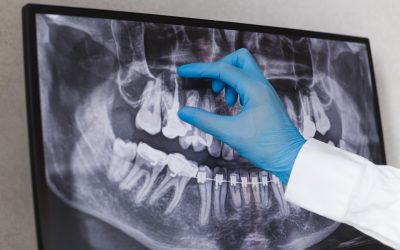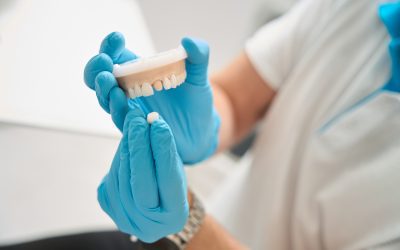Dentistry is a diverse field, encompassing a variety of specialists who focus on different aspects of oral health care. Understanding the different types of dentists can help you make informed decisions when it comes to choosing a dental care provider for yourself or your family. These practitioners possess unique skills and training, catering to various dental concerns and age groups.
So, what are the different types of dentists you ask? Among the most common dental specialization types are:
- Family Dentists: provide dental care to patients of all ages, ensuring oral health maintenance and treatments appropriate for each family member.
- Cosmetic Dentists: specialize in improving the aesthetic appearance of teeth through various procedures, such as teeth whitening, veneers, bonding, and more [NewMouth].
- Pediatric Dentists: focus on providing comprehensive oral health care for children, from infancy to adolescence.
- Orthodontists: specialize in correcting misaligned teeth and jaws using various appliances, including braces and clear aligners.
- Periodontists: treat gum diseases and conditions, as well as dental implant procedures [Indeed].
- Endodontists: are experts in diagnosing and treating tooth pain, primarily focusing on root canal therapy and preserving the tooth structure [NewMouth].
- Prosthodontists: primarily provide treatments to replace missing teeth or improve their appearance through dental implants, dentures, crowns, and bridges [Wayzata Dental].
- Dental Anesthesiologists: are dentists specialized in administering anesthesia for dental procedures
- Oral and Maxillofacial Surgeons: diagnose and treat various conditions affecting the mouth, jaws, face, and neck, often performing complex surgical procedures [NewMouth].
- Oral and Maxillofacial Radiologists: focus on interpreting and analyzing dental and facial imaging, these professionals play a key role in diagnostics and treatment planning for various oral conditions [WebMD].
- Oral Pathologist: focuse on the diagnosis and management of diseases that affect the oral and maxillofacial regions, oral pathologists work closely with other dental specialists to determine the best course of treatment for oral diseases and conditions.
- Dental Public Health Clinics: promote oral health and dental hygiene within communities, focusing on preventive measures and education to reduce the prevalence of oral diseases [WebMD].
This diversity ensures that patients receive the proper care tailored to their specific needs, whether it's routine dental checkups, cosmetic enhancements, or addressing complex dental issues.
General Dentists
General dentists are primary care dental providers who diagnose, treat, and manage overall oral health care needs. They make up approximately 80% of dental practitioners, and their services include gum care, root canals, fillings, crowns, and more [WebMD].

Pediatric Dentists
A pediatric dentist, also known as a pedodontist, is a specialist dedicated to the oral health of children from infancy through their teenage years. They possess the experience and qualifications to cater to a child's teeth, gums, and mouth throughout the various stages of childhood. These professionals focus on unique dental issues commonly found in infants, children, and adolescents.
Some key differences between general dentists and pediatric dentists are as follows:
- Pediatric dentists specialize in treating dental issues specific to children and adolescents.
- They possess an additional 2-3 years of specialized training following dental school.
- Pediatric dentists work closely with pediatricians and general dentists for patient referrals, as mentioned in [Colgate].
- They are also involved in developing research to improve preventative oral healthcare methods for children.
Orthodontists
Orthodontists are dental specialists who focus on the alignment of teeth and the jaw. They utilize various appliances and treatments to correct issues such as crooked teeth, overcrowding, and malocclusions (improper bites). Orthodontic treatment not only improves the appearance of teeth but also enhances their functionality, making it easier for patients to bite, chew, and speak.
Some common orthodontic treatments include:
- Braces: Traditional metal braces or clear (ceramic) braces are used to apply pressure and gradually move teeth into their proper positions. [Cleveland Clinic]
- Clear aligners: Removable, transparent trays such as Invisalign, Byte, and Candid, which are custom-made for the patient and worn for 20-22 hours a day to gradually shift teeth. [NewMouth]
- Space maintainers: Devices used to hold space for permanent teeth when primary teeth are lost prematurely.
- Retainers: Removable or fixed appliances used to hold teeth in their corrected positions after orthodontic treatment.
- Palate expanders: Appliances that gradually widen the upper jaw to correct issues with overcrowding or crossbites.
Periodontists
Periodontists are dental specialists who focus on the prevention, diagnosis, and treatment of gum disease and other conditions affecting the gums and supporting structures of the teeth, such as periodontal ligament and alveolar bone. They also play a crucial role in placing dental implants.
These dental professionals complete additional years of advanced training after dental school, typically three years, to gain expertise in gum disease treatment and dental implant placement. Some common procedures undertaken by periodontists include:
- Gingival flap surgery: Also known as pocket reduction surgery, it treats moderate to severe gum disease by making incisions and gently removing the gums from the teeth.
- Scaling and root planing: A deep-cleaning procedure that removes plaque and tartar deposits from the teeth and root surfaces to help reduce inflammation.
- Gingival grafts: A surgical procedure that involves transplanting healthy gum tissue to areas with gum recession to improve gum health and aesthetics.

Endodontists
Endodontists are dental specialists who focus on the diagnosis, prevention, and treatment of diseases and injuries affecting the inner parts of the tooth, also known as the dental pulp. Their primary goal is to maintain and restore teeth through endodontic therapy, which mostly involves root canal treatment [Festival Dental Clinic].
These professionals have undergone additional years of training beyond dental school, with a focus on endodontic procedures and techniques. This specialization allows them to handle more complex cases and employ the latest advancements in endodontic technology [American Association of Endodontists].
Prosthodontists
Prosthodontists are highly trained specialists known as the “architects of the smile.” They possess a unique understanding of all the elements that go into creating a beautiful, functional, and natural-looking smile, which includes not just the teeth, but also the gums, lips, and facial features.
After graduating from dental school, prosthodontists receive three additional years of training in their field, focusing on the restoration and replacement of missing or damaged teeth using artificial devices like dentures, dental implants, crowns, and bridges. The primary role of a prosthodontist is to provide cosmetic dentistry or treatments that improve the appearance of teeth, such as dental implants, whitening, veneers, dentures, crowns, and bridges. Some of their work may be more invasive, such as replacing missing teeth. [Cleveland Clinic]
Prosthodontists collaborate with other dental specialists, like periodontists.
Dentist Anesthesiologist
A dentist anesthesiologist is a dental professional who specializes in administering anesthesia to provide comfort and pain relief for patients undergoing dental procedures. These dentists usually complete hospital-based training in pharmacology, internal medicine, emergency medicine, and pediatric and adult anesthesiology, focusing on patient safety in dentistry [ADEA]. After their residency, they often work as mobile anesthesia providers, hospital anesthesiologists, anesthesiologists in ambulatory surgical centers, or anesthesia faculty in academic institutions [Dentistry Today].
Oral and Maxillofacial Surgeons
Oral and maxillofacial surgeons are dental specialists who perform a variety of surgical procedures involving the face, mouth, and jaw. Their expertise covers a wide range of complex conditions and treatments. Some of their primary responsibilities include:
- Dental implant placement: These surgeons work closely with periodontists in the surgical implantation of dental implants, providing a stable foundation for replacement teeth when a general dentist is not capable of doing so in their own office [WebMD].
- Treating facial injuries: Oral and maxillofacial surgeons are trained to repair and reconstruct facial structures affected by trauma, such as broken bones in the face and jaw or damage to soft tissues like the skin, muscles, and nerves.
- Correcting facial deformities: They are also skilled in treating congenital or acquired deformities of the face and jaw, such as cleft lip and palate or misaligned jaws.
- Performing facial cosmetic surgery: Some oral and maxillofacial surgeons may specialize in cosmetic procedures like facelifts, rhinoplasty, and other facial enhancements to improve a patient's appearance and self-esteem.
Oral and maxillofacial surgeons undergo extensive training, which includes a dental degree (DDS or DMD) and a surgical residency program that typically lasts four to six years. Some oral surgeons may also choose to pursue additional education and training in a specific area of their field, such as dental implant placement, facial reconstructive surgery, or cosmetic surgery [WebMD].

Oral and Maxillofacial Radiology
Oral and Maxillofacial Radiology is a dental specialty that focuses on the use of imaging techniques for the diagnosis and treatment of diseases or disorders of the mouth and jaw. This field is vital for identifying various oral conditions and assisting in treatment planning for other dental professionals.
Some common imaging methods used in Oral and Maxillofacial Radiology include:
- X-rays
- Panographic X-rays
- Cone-Beam Computed Tomography (CBCT)
- Magnetic Resonance Imaging (MRI)
These advanced imaging techniques provide detailed information about the anatomy and pathology of the oral and maxillofacial region, guiding dental practitioners in making informed decisions regarding their patients' oral health.
Oral Pathologists
Oral Pathologists are dental professionals who specialize in the study of diseases affecting the oral structures in the mouth, as well as parts of the neck and face. The primary focus of their work involves examining biopsies, conducting research, and diagnosing diseases related to the oral cavity [Wayzata Dental].
Their expertise differs from other dental specialists who mainly provide direct patient care in a traditional dental office setting. While other dental specialists might perform procedures like fillings, crowns, bridges, and head and neck cancer screenings, oral pathologists focus on understanding the causes of oral diseases, exploring treatment options, and helping prevent them from happening [Oral Pathology Consultants].
Dental Public Health Specialists
Dental Public Health specialists focus on the broader aspect of oral health within a community. They work to improve oral health education, advocate for public policies, and develop prevention programs like fluoridation schemes and dental care screenings.
In this article, we have discussed what are the different types of dentists. Each dental specialty focuses on a unique aspect of oral health care to ensure patients receive the most comprehensive treatment possible.
To summarize, the various dental specializations include:
- Periodontists: Experts in the periodontium, deal with the soft tissues that support and surround the teeth in the mandibular (lower) and maxillary (upper) jawbones.
- Orthodontists: Specializing in the alignment of teeth and jaws, using wires, braces, retainers, and other devices to correct bites and improve appearance.
- Endodontists: Specialists in the treatment of the dental pulp and nerves inside the teeth, typically performing root canals and treating abscesses.
- Prosthodontists: Experts in dental restoration and tooth replacement, using prosthetics such as crowns, bridges, dentures, and implants to repair or replace damaged or missing teeth.
- Oral and Maxillofacial Surgeons: Performing minor and invasive oral surgeries for conditions such as impacted teeth, jaw disorders, facial injuries, and oral cancers.
- Pediatric Dentists: Focusing on the oral health care of infants, children, and adolescents, providing preventive and restorative dental care services tailored to young patients.
- Oral and Maxillofacial Pathologists: Diagnosing and managing oral, jaw, and facial diseases using laboratory diagnostic techniques, guiding decision-making for other dental specialists.
- Oral and Maxillofacial Radiologists: Using advanced imaging technologies, such as X-rays and CT scans, to diagnose oral and maxillofacial conditions.
- Dental Public Health Clinics: Promoting oral health and dental hygiene within communities, focusing on preventive measures and education to reduce the prevalence of oral diseases.
Understanding the various dental specializations can help patients choose the right dental care provider to address their unique oral health needs. It is important to consult with a dentist or specialist to determine which type of care is most appropriate for your individual circumstances.




